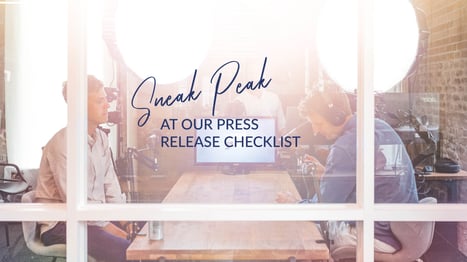Media relations is a part of public relations that includes working with the media for the purpose of sharing strategic information with the public. Among many other benefits, media relations can positively influence your public relations because, if done correctly, you will reach a mass, targeted audience, increase your visibility and improve brand awareness, ultimately pushing more people into your marketing funnel. Here are our top recommendations for media relations that will get you more coverage, awareness, and leads.
3 Media Relations Best Practices:
1. Research and Use Editorial Calendars
One of the first steps you should take as part of your media relations efforts is research. Research news and trade publications, broadcast programs, blogs, social media accounts, and video channels. Identify those that have the same target audience as you. Next, research the specific journalists or individuals working for these organizations and learn what they care about and what they typically cover. The larger the reach and influence of the journalist or influencer, the more pitches and correspondence they receive and the harder it will be to make contact and get your message in front of their audience. But don't let that hold you back, reach out and consider it an opportunity to foster a business relationship.
Most media outlets, whether a traditional trade magazine or industry blogger, will provide good contact information. Review the information online and then call or email to confirm you’re reaching out to the right person. Not sure what to pitch them? Check out our free Press Release Checklist to help you build the perfect media release.
Lastly, many media outlets publish editorial calendars. An editorial calendar, while also aimed at attracting advertisers, allows brands and businesses to track when a media outlet will publish specific content. Reviewing editorial calendars of targeted media outlets will enable you to create timely, relevant, and targeted pitches for journalists and influencers.
2. Think Before You Pitch
Journalists, broadcasters, bloggers, and influencers receive dozens, even hundreds and thousands, of media requests each week. Before you shoot off an email ask yourself a few questions. Will this contact care about what you have to say? If you’re submitting a promotion announcement or office expansion, and the publication doesn’t have a Business Update section or the journalist doesn’t write for this section, don’t send it. It will be ignored. And, if you send too many of these, you may get blacklisted. Make your pitches matter and be of value to the person you’re reaching out to. How will your correspondence or pitch stand out above all of the others? If you’re sending an email, review your subject line, opening sentence, and overall details. Although this isn’t a perfect formula, consider if what you’re pitching is first, only, best, or most and, if it is, say so.
3. Contact, Follow Up, Follow Up, Move On
According to a 2019 JOTW Communications Survey, 73% of journalists are OK with receiving a follow-up to a pitch they didn’t initially respond to and only 12% would prefer to not receive any type of follow-up. In fact, I estimate, that 80% of the coverage we receive for clients is from a follow-up action. However, following up is a balance. You want to stay persistent and strong but not be annoying or pesky. You want to have the initial information be familiar but you don’t want to jump the gun. Best practices include making a follow up call 2-3 business days after you initially reached out but no longer than 5. Be sure your second follow-up is a call. It’s easy to delete an email and less easy to avoid a call. And, if you’ve followed up twice with no response, it’s time to move on.
Plus one that really, really matters…RELATIONSHIPS
If there’s one thing to prioritize about media relations, it’s relationships. Journalists, broadcasters, bloggers, and influencers are passionate about their work and what they offer their audiences. They experience challenges and frustrations just like you do. Offering them thoughtful and valuable resources, assistance, or information will be appreciated. To begin, take an interest in what each contact covers and what they’re most interested in. Introduce yourself when you see them at an event or request to meet them face-to-face. Getting to know them and seeing what they find most valuable from businesses and brands will help you form a stronger connection. Connect with them regularly to offer help and show interest, but be sure to have boundaries and not overwhelm or push them away. As with any relationship, remember it goes two ways. Find a way for both of you to benefit. Once you’ve built a relationship, your calls and emails will get answered, and you may even become a reliable, consistent source.
Looking for help with your media relations? We specialize in Public & Media Relations. Contact us today at hello@lumstudio.com to learn more!
Check Out Our Public Relations Resources and These Posts Too:
Why is Public Relations Important? Hint, it impacts your business.
Effective Public Relations: Speak to the Core
A Business Must: Reputation Management
Reframing, Minimizing & Navigating Negative Comments on Social Media


